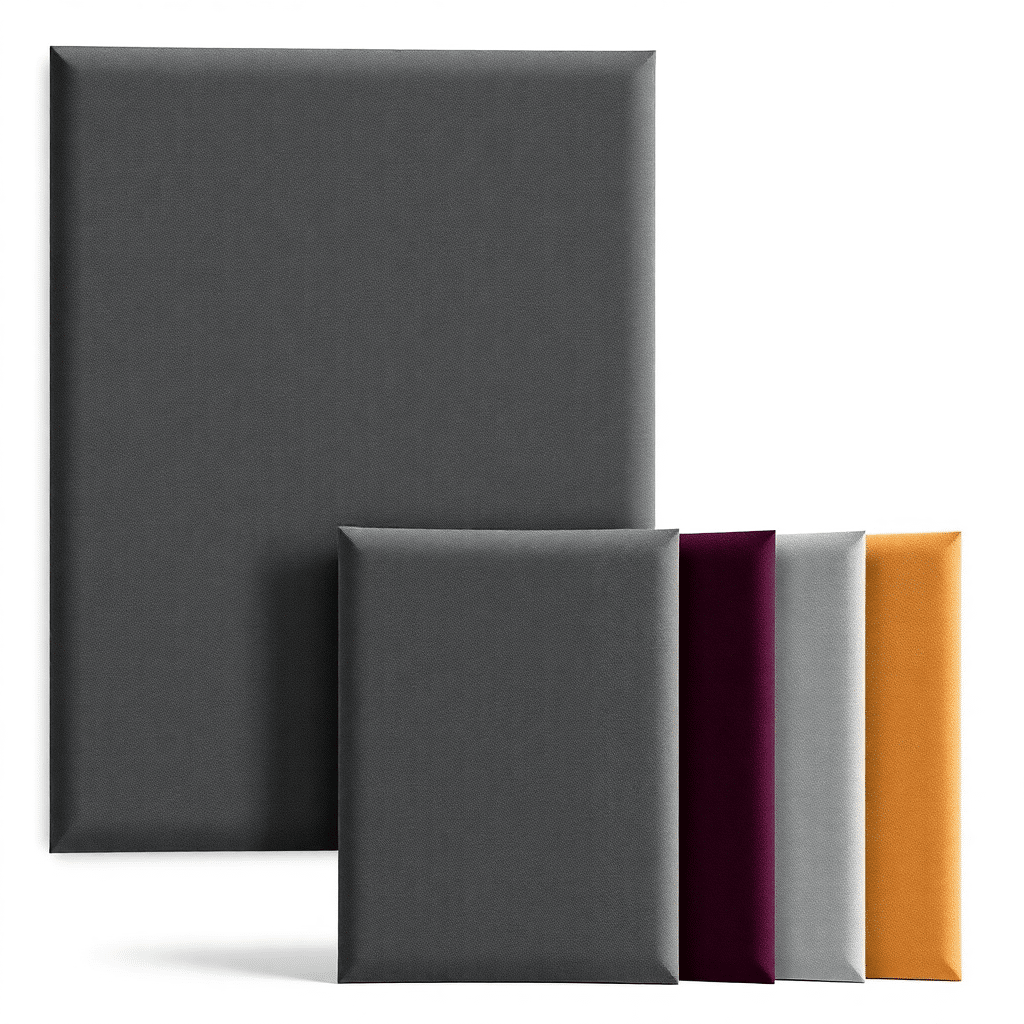Choosing the Right Sound Panel Fabric for Your Needs

In today’s era, it is important to ensure that any space like a home theater, recording studio, or office is acoustically friendly. One of the first and most important steps to accomplishing this is choosing sound panel fabric. The fabric you pick has a great influence on both the sound quality and the aesthetics of your space. In this guide, you’ll learn about the considerations involved in choosing sound panel fabric, the different fabric options, and tips for making your best choice.
What are Acoustic Panels and Why Use Them?
Acoustic panels are specially designed to absorb sound waves, thus reducing echoes and improving overall sound clarity. Dynamic microphones are commonly employed in situations where sound fidelity is critically important, such as in sound engineering, theater, and even noisy office environments. Acoustic panels, which are used to absorb sound and improve acoustics, come in a variety of shapes and sizes but are generally wrapped in fabric for aesthetic purposes. The most important purpose of the fabric covering is to be acoustically transparent. That is, it needs to be transparent for sound, as it should pass through sound waves without being absorbed or reflected. The material helps reduce noise in your space and adds aesthetic value, so it’s important to choose the right one.
Key Factors in Choosing Sound Panel Fabric
The following factors are crucial when choosing:
Acoustic Transparency
So, probably the most integral part of the sound panel fabric is its ability to allow sound waves to pass through it. Certain types of fabric are more sound absorbent than others. Those with a more open weave tend to allow more sound transmission.
Durability
The fabric should be resistant to wear and tear over time. Seek out materials that are non-saggy and can hold their appearance in a range of humidity. You should be able to rely on your investment for much longer.
Fire Regs
Many commercial applications must adhere to specific fire safety standards. Make sure it is flame-proof so that you comply with rules and laws, but also to be safe.
Visual Appeal
The right fabric can add to the visual impact of your space. Think about colors and patterns that don’t clash with or overwhelm your decor, but that continue to do their acoustic duty.
Maintenance
Select fabrics that can be easily cleaned and maintained, particularly in high-traffic areas where dirt and stains can accumulate more easily.
Popular Sound Panel Fabrics
Here are some common choices:
Cotton Duck Fabric
This sturdy cotton fabric is relatively inexpensive and is acoustically transparent. Cotton Duck is widely used for tons of applications as it is very breathable, making sound waves transfer through it well.
Guilford of Maine Fabrics
Known for their durability and timeless styles, Guilford of Maine fabrics also offer superior acoustic properties while looking beautiful. Available in dozens of hues and textures, they’re versatile enough to complement any design scheme.
Polyester
A synthetic material that is very sturdy and has excellent sound absorption capabilities. Polyester fabrics are straightforward to clean, even furthering their popularity in environments where upkeep is an issue.
Duck Canvas
This fabric is thick and dense. Duck canvas absorbs sound better than most materials and also holds its shape over time. It’s a great choice for spaces needing heavy-duty acoustic treatment.
How to Check Fabric for Acoustically Transparent
Do not worry if you do not know which fabric is more appropriate for your acoustic panels. To ensure that your selected fabric will work, you can make a simple pottery test:
- Put the fabric in your mouth and blow air through it.
- If it barely offers any resistance as air passes through, then the fabric is likely acoustically transparent.
This test can help you determine if the fabric would work well in an acoustic setting.
The Importance of Fabric Thickness
The fabric thickness can also define the Acoustic properties. Thicker materials may absorb sound more but compromise transparency. Depending on what you need, you have to find a balance between thickness and transparency.
Common Misconceptions About Sound Panel Fabric
This leads to a few common misconceptions around sound panel fabric and can lead to decisions based on misinformation:
Not all fabrics have the same acoustic properties: Some materials have the appearance of being good but don’t perform acoustically well.
Price = Quality: Higher-end fabrics tend to perform better, but this is not a hard and fast rule. You need to assess each one based on its unique properties, not simply its price.
Color Doesn’t Matter: Though color might seem purely cosmetic, darker colors can absorb more heat, which can impact some materials’ performance over time.
Tips for Choosing Sound Panel Fabric
Test Sample
Ask suppliers for samples before making a final decision. This lets you see how they look in your space and experience their acoustic properties for yourself.
When in Doubt, Ask an Expert
If you are uncertain which fabric will work best for you, an acoustical professional can provide tailored advice based on your particular space.
Know Your Space
Determine where in your residence the panels will be installed; certain spaces, like a home theater, for example, will have much less traffic than high-traffic areas that demand more durable panels.
Be Financially Prudent
While you don’t want to scrimp on quality, don’t be afraid to create a budget that allows you to consider a wide variety of possibilities without breaking the bank.
Technology
The design or technology used to produce panels can impact their performance. Just be sure to adhere to the proper installation protocols or seek professional help when necessary.
Conclusion
To strike a balance between audio efficiency and visual appearance, selecting the appropriate sound panel fabric plays a crucial role in the acoustic properties of your treatment and the look of your room. This allows you to make an informed choice that fits your needs, taking into account details like acoustic transparency, durability, fire safety, aesthetics, maintenance, thickness, and environmental impact. If you need to buy sound panel fabrics of higher quality in a way that meets the requirements of different applications, you can look in the acousticstore.co to browse a wide selection of acoustics products for any environment.
Frequently Asked Questions
What type of fabric can I use for acoustic panels?
Not every fabric is appropriate for acoustic panels. Only materials specifically manufactured to absorb sound should be selected.
What are the preferred fabric types for sound absorption?
Akust Off offers cotton duck, Guilford of Maine fabrics, and polyester, which are some of the best in acoustic transparency, and they are very durable.
How do I keep my fabric from sagging over the years?
Choose fabrics that are designed to be tough and not saggy, such as duck canvas or polyester blends.
Are there green building options?
Yes! Many manufacturers have developed eco-friendly fabrics from recycled materials and sustainability-sourced fibers that still offer high-quality acoustical properties.
